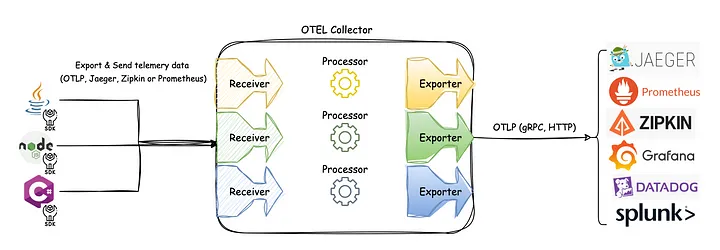概述
接口类型是由 type 和 interface 关键字定义的一组方法集合(唯一确定所代表的接口)方法,而非函数,更多是从这个接口的实现者的角度考虑的
1 2 3 4 type MyInterface interface { M1(int ) error M2(io.Writer, ...string ) }
方法的参数列表中的形参名和返回值列表中的具名返回值,都不作为区分两个方法的凭据
1 2 3 4 5 type MyInterface interface { M1(a int ) error M2(w io.Writer, args ...string ) }
在接口类型中声明的方法必须是具名的,且方法名在这个接口类型的方法集合中是唯一的
类型嵌入:在 Go 1.14 开始,接口类型允许嵌入不同接口类型的方法集合存在交集方法名和函数签名也要保持一致,否则会编译报错
1 2 3 4 5 6 7 8 9 10 11 12 13 14 15 type I1 interface { M1() } type I2 interface { M1() M2() } type I3 interface { I1 I2 M3() }
1 2 3 4 5 6 7 8 9 10 11 12 13 14 15 type I1 interface { M1() } type I2 interface { M1(string ) M2() } type I3 interface { I1 I2 M3() }
在接口类型的方法集合中放入首字母小写的非导出方法也是合法的 - 极少使用非导出方法,那么这个接口类型自身通常也是非导出的,仅限于包内使用
context/context.go 1 2 3 4 type canceler interface { cancel(removeFromParent bool , err error ) Done() <-chan struct {} }
空接口类型 - 方法集合为空显式定义空接口类型,而是直接使用 interface{} 的类型字面量
1 type EmptyInterface interface {}
接口类型被定义后,可以用于声明变量,称为接口类型变量,如果没有显式赋予初值,默认值为 nil
1 2 3 4 5 var err error var r io.Reader fmt.Printf("%#v\n" , err) fmt.Printf("%#v\n" , r)
类型 T 实现接口类型 I
类型 T 的方法集合是接口类型 I 的方法集合的等价集合或者超集
此时,类型 T 的变量可以作为合法的右值赋值给接口类型 I 的变量
任何类型都实现了空接口类型的方法集合(空),即可以将任何类型的值作为右值,赋值给空接口类型的变量
1 2 3 4 5 6 7 var i interface {} = 15 i = "hello" type T struct {}var t Ti = t i = &t
类型断言
按 T 为接口类型和非接口类型,语义是不一样的
.(非接口类型)
.(接口类型)
非接口类型
语义:断言存储在接口类型变量 i 中的值的类型为 T
如果断言失败,则 ok 为 false,而 v 为类型 T 的零值
1 2 3 4 5 6 7 8 9 10 11 12 13 14 var a int64 = 13 var i interface {} = a v1, ok := i.(int64 ) fmt.Printf("%v, %T, %v\n" , v1, v1, ok) v2, ok := i.(string ) fmt.Printf("%v, %T, %v\n" , v2, v2, ok) v3 := i.(int64 ) fmt.Printf("%v, %T\n" , v3, v3) v4 := i.([]int ) fmt.Printf("%v, %T\n" , v4, v4)
接口类型
语义:断言 i 的值实现了接口类型 T
如果断言成功,v 的类型为 i 的值的类型(更广),并非 T更窄),值为 nil
1 2 3 4 5 6 7 8 9 10 11 12 13 14 15 16 17 18 19 20 21 22 23 24 25 26 27 28 29 type I interface { M() } type T int func (T) println ("T's M" ) } func main () var t T var i interface {} = t v1, ok := i.(I) if !ok { panic ("the interface value is not of type I" ) } v1.M() fmt.Printf("%T\n" , v1) i = int64 (13 ) v2, ok := i.(I) fmt.Printf("%T, %v\n" , v2, ok) v2 = 13 }
type switch 是接口类型的类型断言的变种
1 2 3 4 5 6 7 8 9 10 11 12 13 14 15 16 17 18 19 20 21 22 23 24 25 26 27 28 type Animal interface { shout() string } type Dog struct {}func (d Dog) string { return "Woof!" } type Cat struct {}func (c Cat) string { return "Meow!" } func main () var animal Animal = Dog{} switch a := animal.(type ) { case nil : fmt.Println("nil" , a) case Dog, Cat: fmt.Println(reflect.TypeOf(a), a.shout()) default : fmt.Println("unknown" ) } }
小接口
接口类型的背后,是通过把类型的行为抽象成契约,降低双方的耦合程度
隐式契约,自动生效
接口类型和实现者之间的关系是隐式的,无需显式声明 implements
实现者只需要实现接口方法集合中的全部方法,立即生效
使用小契约
尽量定义小接口,方法个数控制在 1~3
接口越大,抽象程度只会越弱
builtin/builtin.go 1 2 3 type error interface { Error() string }
io/io.go 1 2 3 type Reader interface { Read(p []byte ) (n int , err error ) }
net/http/server.go 1 2 3 4 5 6 7 8 9 type Handler interface { ServeHTTP(ResponseWriter, *Request) } type ResponseWriter interface { Header() Header Write([]byte ) (int , error ) WriteHeader(statusCode int ) }
优势
接口越小(方法集合小),抽象程度越高(对应的集合空间就越大),极限情况为 interface{}
易于实现和测试
职责单一,易于复用组合
Go 推崇基于接口的组合思想
通过嵌入其它已有的接口类型的方式来构建新的接口类型
步骤
不管接口大小,先抽象出接口
将大接口拆分为小接口
关注接口的单一职责












